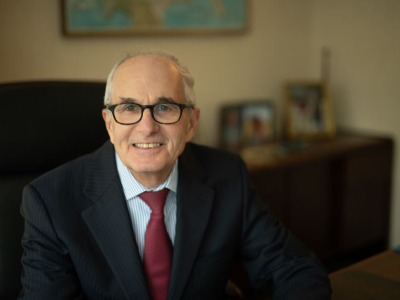Last week in
Agriculture development has long been viewed as the economic key to African, but it is not always recognized as the solution to global food security and our ability to feed nine billion people by 2050. Africa has 60 percent of the underutilized agricultural land in the world and is, therefore, the key to global food security.
The AGRF was coordinated by the
That emphasis on the private sector at the AGRF was echoed by Secretary General Annan; Dr. Jakaya Kikwete, President of Tanzania; Dr. Akin Adesina, the Minister of Agriculture from Nigeria; and many other speakers. There were a number of representatives from multinational companies in attendance, as well as many small and medium sized companies. The forum also included breakout panels dedicated to building public-private partnerships.
So how does
In
None of that will be easy, but I share Secretary General Annan’s optimism that it is doable and must be done. The immediate first steps, in my opinion, are to:
· Ensure newer seeds and nutrients reach all smallholder farmers;
· Help farmers get the credit or resources they need to purchase these inputs;
· Help ensure there is a market for their products; and
· Encourage smallholder farmers to take the risk and use existing technology.
Let’s remember that, for most smallholders, their families have used traditional seeds without any nutrients for generations. They are relying on their production, first and foremost, to feed their children. Therefore, making a change to newer seeds requires a major risk, even if they have the resources or credit. Syngenta, for one, is working with smallholders to develop mechanisms for sharing the risk and pilot improved seeds on only a part of their small farm.
“Significant progress is being made,” noted Tip
O’Neill, President of International Raw Materials, in
President Kikwete reported in his keynote remarks: “There is evidence that the productivity of smallholder farmers is increasing. In Kilombero District, for example, the yields for maize have increased from 1.5 tons per hectare to 4.5 tons per hectare; the yields for rice have increased from 2.5 ton per hectare to 6.5 tons per hectare. Overall, we have now attained 95 percent food self-sufficiency.”
The key is working within the African agricultural structure.
Africa will not become
There will have to be other elements to the African
Green Revolution including, capacity building, land reform and public
policy. For example, it is still easier
to export from Africa than trade within
In the words of President Kikwete: “Let me conclude
by saying that we are poised to succeed in our quest for eradicating hunger and
poverty in
As they say in
Note: the full text of the major speeches can be found at www.agrforum.com
About the Author: Marshall Matz serves on the Board of the World Food Program—US; the Congressional Hunger Center and the Global Child Nutrition Foundation. He is a partner at OFW Law in Washington, D.C.mmatz@ofwlaw.com

